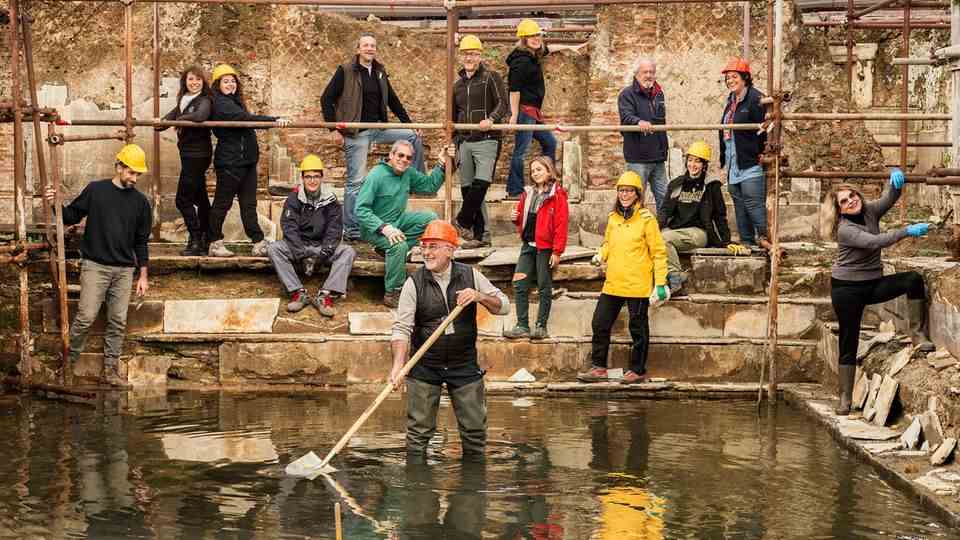archeology
“Extravagant”: Lavishly furnished antique winery discovered near Rome
The discovery of the ancient winery near Rome happened by chance when archaeologists from the Italian Ministry of Culture were trying to find one of the starting points for the arena, which is also part of the complex
© Stefano Castellani / Antique
Even people 2000 years ago were already able to produce wine efficiently. A newly uncovered vineyard demonstrates exactly how they did this.
A winery recently discovered by archaeologists on the Via Appia Antica near Rome gives us fascinating new insights into the way people lived almost 2000 years ago. The authors of the study accompanying the discovery present in great detail the architectural and decorative form of the winery and how the annual harvest was organized.
The complex that has been uncovered dates from the mid-third century AD and sheds light on how the elite of the time – who were the only ones to use the complex – could fuse utilitarian functions with ostentatious luxury to underscore their social and political status.
Winery near Rome was an accidental discovery
The discovery of the ancient Roman winery happened by chance when archaeologists from the Italian Ministry of Culture were trying to find one of the starting points for the arena that also belongs to the complex, as the British daily newspaper “The Guardian” summarizes.
archeology
300 coins in an amphora – the gold treasure of Como
The arena was built by Emperor Commodus, who ruled from 177 to 192 AD. According to the authors of the study in the specialist magazine “Antiquity”, the winery that was later created was built over one of the sought-after gates.
The uncovered complex has features typical of a Roman winery, namely a grape treading area, two presses, a vat for collecting and settling the grape must, and a canal system to bring everything together in a wine cellar-style storage area, the researchers said.

However, although these features are typical of Roman wineries in several Mediterranean regions, their specific decoration and specific layout for a production site seems almost unparalleled in the Roman and perhaps the entire ancient world.
“Extravagant nature of the winery”
The rectangular wine treading zones, for example, appear unusual. The “treads were normally covered with waterproof concrete,” explains archaeologist Dr. Emlyn Dodd, Assistant Principal at the British School in Rome and an expert on ancient wine production. “But these were covered in red marble. Which isn’t ideal, as marble gets incredibly slippery when wet. But it shows that whoever built this prioritized the extravagant nature of the winery over practical considerations,” he adds.
Other special features also make this complex so unique, not least because of the opulent environment in which it was located. Located just beyond the city limits of Rome in ancient times, the winery was part of a landscape that was once orchards and farmland, dotted with monumental villas and tombs of the upper class of the time.
Travelers and those interested in archeology can also see the splendor and scope of the site for themselves: the excavation area, including many of the finds that have now been uncovered, is open to the public.
Sources: “antique”, “Guardians”



